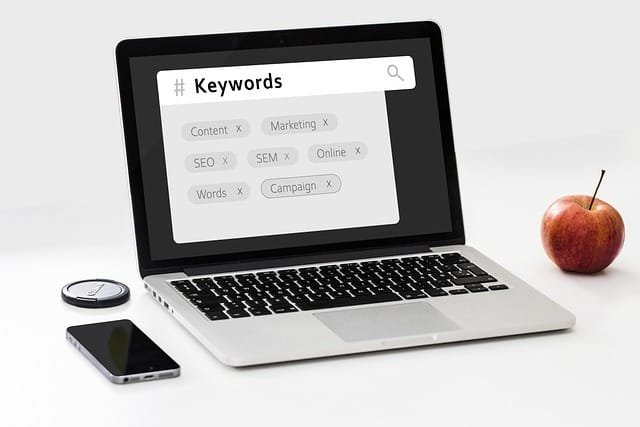This Article has been revised, edited and added to, by Poulomi Chakraborty.
- Introduction to SEO and Usability
- Core Usability Factors and Their Impact on SEO
- Content Relevance and Quality
- Engaging Visuals and Multimedia
- On-site Search and User Experience
- Accessibility and Inclusivity
- Conclusion: Crafting a Travel Website That Delivers
Travel websites are much like any other online platform when it comes to SEO, but with their own unique set of challenges. As the internet becomes increasingly saturated with information, standing out amongst the crowd and offering a user-friendly experience can have profound impacts on SEO and site performance. Let’s dive deep into the usability factors and see how they impact SEO for travel websites.
Introduction to SEO and Usability

SEO and usability are closely intertwined. While SEO aims to drive organic traffic from search engines to websites, usability ensures that this traffic has a seamless and delightful experience on the site. When a site is easy to navigate and offers valuable content, users tend to stay longer and engage more, sending positive signals to search engines which in turn improves the website’s SEO.
Why It Matters for Travel Websites
Travel websites, in particular, deal with a myriad of elements like booking engines, detailed itineraries, reviews, and multimedia content. Ensuring usability can help convert casual browsers into confirmed bookings, and in the process, generate organic signals that bolster SEO.
The Strategic Intersection of SEO and Usability
In the digital realm, where competition is fierce and attention spans are short, the confluence of Search Engine Optimization (SEO) and website usability isn’t just beneficial—it’s critical. For travel websites, this intersection presents a unique opportunity to not only attract organic traffic but also to create memorable, user-friendly experiences that lead to higher conversion rates and customer loyalty.
Understanding this relationship begins with recognizing that SEO and usability share a common goal: to satisfy user needs and intentions. However, their approaches are complementary rather than identical. SEO focuses on making content visible and accessible to search engines, while usability concentrates on the user’s experience once they’ve landed on the website.
Enhancing User Experience: A Foundational SEO Strategy
The Role of User Experience in SEO
At the heart of a successful travel website lies a stellar user experience (UX). This isn’t just about aesthetics or navigation; it’s about providing real value to the visitor, answering their questions, and guiding them smoothly towards their goals—whether that’s booking a trip, finding travel tips, or exploring destination ideas.
Search engines, particularly Google, have evolved to prioritize websites that offer a strong UX. Metrics such as dwell time (how long visitors stay on your site), bounce rates (how quickly they leave if they don’t find what they’re looking for), and click-through rates (how often links are clicked) play significant roles in SEO. These metrics reflect user satisfaction and are influenced heavily by how user-friendly a website is.
Building a User-Centric SEO Strategy
For startup founders in the travel domain, developing a user-centric SEO strategy means going beyond keywords and backlinks. It involves a deep dive into understanding your audience’s preferences, behaviors, and needs. This understanding should then inform every aspect of your website’s design and content strategy, ensuring that users not only find your site through search engines but also enjoy their experience once they arrive.
- Creating Value with Content: Content is the cornerstone of both SEO and usability. For travel websites, content that answers specific queries, provides insightful guides, and inspires visitors can make a significant difference. However, it’s not just about quantity. The relevance, readability, and value of your content play pivotal roles in keeping users engaged and encouraging them to explore further.
- Designing with the User in Mind: A website’s design should facilitate an effortless journey for the visitor. This means intuitive navigation, fast-loading pages, and responsive design that adapts to various devices and screen sizes. For travel sites, visual elements like photographs and videos of destinations should not only be high quality but also optimized to ensure they don’t hamper load times.
Staying Ahead: The Evolution of SEO and Usability
The digital landscape is constantly changing, with new technologies, user preferences, and search engine algorithms emerging regularly. For startups, staying informed about these changes and adapting accordingly is not optional; it’s essential. This might involve embracing new SEO techniques, updating content to match current trends, or redesigning elements of your website to improve usability.
The integration of SEO and usability offers a framework for building and maintaining travel websites that not only rank well in search engine results but also provide exceptional user experiences. By adopting a strategic approach that prioritizes the needs and preferences of your target audience, you can create a travel website that stands out in a crowded marketplace, attracts more organic traffic, and converts visitors into loyal customers.
Core Usability Factors and Their Impact on SEO

Website Speed and Performance
In our fast-paced world, users have little patience for slow-loading websites. For travel websites, where users are often looking to make quick decisions, a delay of even a few seconds can lead to loss of potential bookings. Search engines, recognizing user preferences, factor website speed into their ranking algorithms.
Tips to Improve Speed
- Optimize images: Use compressed formats, reduce file sizes, and employ lazy loading.
- Use Content Delivery Networks (CDN) to distribute content efficiently.
- Minimize HTTP requests by combining CSS and JavaScript files.
Mobile Responsiveness
The Mobile Revolution in Travel: Travelers are increasingly using mobile devices to plan and book their trips. Whether it’s checking out reviews, comparing prices, or booking a stay, the mobile experience cannot be ignored.
SEO Implications: Search engines like Google have made mobile-friendliness a ranking factor. Mobile-first indexing means that the mobile version of your website is used for indexing and ranking.
Achieving Mobile Excellence
- Employ responsive web design.
- Avoid using Flash and use HTML5 for animations.
- Optimize for touch: ensure clickable elements are adequately spaced.
User-friendly Navigation
Why It’s Key for Travel Websites: A user who can’t find what they’re looking for is a lost opportunity. With the plethora of information available on travel websites, a clear, intuitive navigation is paramount.
SEO Benefits: Search engines crawl websites to understand content structure. A well-organized site with clear navigation aids this process, making it easier for search engines to index.
Best Practices
- Use descriptive menu items.
- Implement breadcrumbs.
- Avoid deep nesting – try to keep important pages no more than three clicks away from the homepage.
Integrating Advanced Usability Features
In the competitive landscape of travel websites, understanding and optimizing core usability factors can significantly influence your SEO outcomes. These factors, when meticulously enhanced, not only cater to search engine algorithms but also profoundly impact user experience, thereby increasing the likelihood of conversions and customer retention.
Prioritizing Accessibility and Inclusive Design
A crucial aspect often overlooked in the design and optimization of travel websites is accessibility. Ensuring that your website is navigable and comprehensible for people with various disabilities is not just a moral obligation but also a strategic SEO advantage. Search engines favor websites that are accessible to a wider audience, reflecting in improved search rankings. Implementing features like screen reader compatibility, keyboard navigation, and alternative text for images can dramatically widen your audience reach and engagement, directly contributing to SEO success.
Leveraging the Power of Semantic Markup
Semantic markup plays a pivotal role in enhancing website usability while simultaneously benefiting SEO. By using HTML5 elements correctly, you can structure your content more effectively, making it easier for search engines to understand the context and hierarchy of your information. For travel websites, this could mean using the <article> tag for blog posts or travel guides, <nav> for navigation links, and <header> and <footer> for consistent site-wide elements. Semantic markup not only improves content accessibility but also aids in achieving a better structure that search engines can easily crawl and index.
Crafting a Superior User Engagement Strategy
Engagement is the currency of the digital age, especially for travel websites where the goal is to captivate and inspire potential travelers. Enhancing user engagement goes beyond mere usability; it requires creating immersive, interactive experiences that resonate with users on a personal level.
Personalization: The Key to User Retention
In the world of travel, personalization can transform a generic visitor interaction into a meaningful connection. Utilizing data analytics to tailor content, recommendations, and offers based on user behavior and preferences can significantly boost engagement and satisfaction. From personalized travel guides to dynamic destination suggestions, the aim is to make every user feel that your website is their personal travel advisor. This level of personalization not only enhances user experience but also contributes to SEO by increasing time on site and reducing bounce rates.
Interactive Content: Elevating the User Experience
Interactive content such as quizzes, polls, virtual tours, and interactive maps can dramatically elevate the user experience on travel websites. These elements encourage users to spend more time on your site, engaging with the content and exploring various sections. From an SEO perspective, such interactive features can lead to higher user engagement metrics, which search engines interpret as a sign of a high-quality website. Furthermore, incorporating social share buttons with these interactive elements can enhance your website’s visibility and backlink profile as users share content they find engaging.
Continuous Usability Optimization
The digital landscape is perpetually evolving, and so are user expectations and SEO algorithms. A successful travel website must embrace a philosophy of continuous improvement, regularly evaluating and refining its usability and user experience strategies.
Implementing Feedback Loops
Gathering and analyzing user feedback is invaluable for continuous usability improvement. Implement feedback mechanisms such as surveys, feedback buttons, or usability tests to understand user needs and pain points. This direct input from your audience can guide you in making targeted improvements that significantly enhance user experience and SEO performance over time.
Analytics-Driven Usability Enhancements
Utilize web analytics tools to gain insights into how users interact with your website. Metrics such as page views, bounce rate, and conversion paths can reveal a lot about the effectiveness of your usability optimizations. Regularly reviewing these metrics allows you to identify areas for improvement and to test different strategies for enhancing user engagement and site performance.
Optimizing core usability factors for SEO is a nuanced process that requires a strategic approach, focusing on accessibility, user engagement, personalization, and continuous improvement. For startup founders in the travel industry, investing in these areas can lead to significant gains in search visibility, user satisfaction, and business success.
Content Relevance and Quality

The Heart of Travel Websites
Meeting User Intent: Travelers come with a myriad of queries – from destination details to visa processes. The content should address their specific needs, offering value and expertise.
Impact on SEO: Quality content is rewarded by search engines. Websites with comprehensive, unique, and authoritative content often see better rankings.
Crafting Quality Content
- Use well-researched keywords.
- Offer multimedia – videos, infographics, and photos.
- Update content regularly.
Trust and Credibility
Importance in the Travel Niche: Trust is paramount. With concerns about online scams and safety, ensuring your website appears trustworthy can make or break a booking decision.
SEO and Trust :Websites deemed credible can earn quality backlinks, a strong SEO signal. Moreover, a trusted site can reduce bounce rates, further aiding SEO.
Building Trust
- Showcase genuine user reviews.
- Include trust signals – certifications, associations, etc.
- Provide easy access to contact details and customer service.
Understanding the User’s Content Journey
The content journey on a travel website is a nuanced pathway that guides a potential traveler from initial curiosity to the final booking decision. This journey is punctuated by various stages, each requiring specific types of content to move the user to the next step seamlessly.
Mapping the Content to the User’s Needs
To enhance content relevance, start by mapping out the typical user’s journey on your travel website. Identify the key stages—from awareness and consideration to decision-making—and the questions or needs that arise at each stage. For instance, early-stage content might focus on destination inspiration and travel tips, mid-stage content could delve into detailed guides and itineraries, while late-stage content might highlight booking procedures and special offers.
Crafting content tailored to these stages not only enhances user engagement but also signals to search engines the depth and breadth of your site’s resources, contributing positively to your SEO efforts.
Leveraging Storytelling to Enhance Engagement
Storytelling is a powerful tool in the travel industry’s content arsenal. It transforms plain information into memorable narratives, making content more engaging and relatable.
The Art of Travel Storytelling
Incorporate storytelling elements into your content strategy by sharing real travel stories, customer testimonials, and cultural insights. These stories should not only entertain but also inform and inspire your audience, providing them with a compelling reason to choose your services.
Storytelling can significantly improve user engagement metrics such as time on site and social shares, which are positive signals for SEO. Moreover, unique and compelling stories are more likely to earn backlinks from other websites, further enhancing your site’s SEO profile.
Integrating Multimedia Content for Richer Experiences
While textual content is essential, the role of multimedia—images, videos, and interactive elements—in enriching content and enhancing user engagement cannot be overlooked. Multimedia content makes your travel offerings tangible to the audience, allowing them to visually and emotionally connect with destinations.
Optimizing Multimedia for SEO and Usability
To ensure multimedia content contributes positively to both SEO and usability, follow these guidelines:
- Optimize Image and Video Files: Ensure multimedia files are optimized for quick loading without sacrificing quality. Use appropriate file formats and compression techniques to enhance site speed and performance.
- Incorporate Descriptive Alt Text: Use descriptive alt text for images and videos, providing context and improving accessibility. This not only aids visually impaired users but also helps search engines understand and index your multimedia content more effectively.
- Embed Interactive Elements: Utilize interactive maps, 360-degree tours, or itinerary planners to make the user experience more engaging. These elements encourage users to spend more time on your site, positively influencing SEO metrics.
Continuous Content Optimization and Updating
The digital landscape and traveler interests are always evolving, necessitating regular content reviews and updates. Updating content with the latest information, trends, and keywords keeps your website relevant and valuable to both users and search engines.
Crafting a Dynamic Content Update Strategy
Create a schedule for reviewing and updating content across your site. This includes refreshing outdated articles, adding new insights to popular pages, and removing or revising content that no longer aligns with your audience’s interests or search trends.
Regular content updates not only provide fresh material for your audience but also signal to search engines that your website is active and relevant, contributing to improved SEO performance.
For travel websites, the path to SEO success is intricately linked with the ability to produce relevant, high-quality content that meets the user’s needs at every stage of their journey. By focusing on user-centric content strategies, storytelling, multimedia integration, and continuous optimization, startup founders can significantly enhance their website’s appeal to both users and search engines.
Engaging Visuals and Multimedia

Painting a Picture for the Traveler
The Role of Visuals
Visuals can transport users to the destination even before they book. High-quality images and videos can enhance user engagement.
SEO Impacts
Longer session durations and lower bounce rates due to engaging visuals can boost SEO. Additionally, optimized images can appear in image search results, driving additional traffic.
Multimedia Best Practices
- Use alt tags for images.
- Compress files without compromising on quality.
- Use engaging thumbnails and captions.
Crafting a Visual Storytelling Strategy
Visual storytelling transcends mere decoration, offering a narrative journey that can captivate and engage your audience. It’s about creating a cohesive visual narrative that complements your written content, guiding your audience through the experiences you offer.
Creating Immersive Visual Experiences
To leverage visuals effectively, consider each image, video, and interactive element as part of a larger story about your destination or service. Use high-quality, original images that capture the essence of the experience. When possible, incorporate videos that offer a glimpse into the destination’s atmosphere, culture, and potential activities. These elements should not only be visually appealing but also strategically placed to complement and enhance the textual content, encouraging users to stay longer and explore further.
Optimizing Visuals for Performance and SEO
While engaging visuals are crucial for attracting and retaining users, they must also be optimized to ensure they do not adversely affect your site’s performance or SEO.
Balancing Quality and Performance
High-resolution images and videos can significantly slow down your website if not properly optimized. Utilize compression tools to reduce file sizes without compromising on quality. Implementing lazy loading can also improve page load times by loading visuals only as they come into view on the user’s screen.
Enhancing Discoverability with SEO Best Practices
To ensure your visuals contribute to your SEO efforts, each image and video should be accompanied by descriptive, keyword-rich alt text. This practice not only improves accessibility for users with visual impairments but also helps search engines understand the content of your visuals, making them more likely to appear in search results. Furthermore, consider the SEO potential of image captions, file names, and surrounding text to reinforce the relevance of your visuals to your content and keywords.
Leveraging Multimedia to Boost Engagement
Multimedia elements such as virtual tours, interactive maps, and user-generated content galleries can significantly enhance user engagement. These elements invite interaction, offering users a more immersive and personalized experience of the destinations or services you are promoting.
Interactive Elements as Engagement Magnets
Incorporating interactive maps that highlight points of interest, virtual tours that allow users to explore destinations in 360 degrees, or platforms for users to upload their travel photos can transform a passive viewing experience into an active exploration. Such features not only increase the time spent on your site but also encourage repeat visits and sharing, all positive signals to search engines.
Encouraging Social Sharing and User Interaction
Visuals and multimedia are inherently shareable content. By embedding social share buttons prominently alongside your visual content, you invite users to share their discoveries, effectively broadening your content’s reach and generating potential backlinks.
Cultivating a Community Through Visuals
Encourage users to comment on, rate, or share their experiences related to your visual content. User interaction not only fosters a community around your brand but also contributes to the content’s freshness and relevance, factors that search engines consider when ranking sites.
For travel startups, the strategic integration of engaging visuals and multimedia is a powerful method to enhance site usability, user engagement, and ultimately SEO. By crafting a visual storytelling strategy, optimizing for performance and discoverability, leveraging multimedia to boost engagement, and encouraging social sharing and interaction, startup founders can significantly improve their travel website’s visibility and appeal.

Related: Check out our free SEO suite

On-site Search and User Experience
Facilitating the User’s Journey
Importance of On-site Search
Travelers often come with specific needs or queries. An efficient on-site search allows users to quickly find the information they need, enhancing their overall experience.
Impact on SEO
A good on-site search can decrease bounce rates as users find relevant content more efficiently. Moreover, analyzing search queries can give insights into user intent and help refine the website’s content strategy.
Optimization Tips
- Use autocomplete functions.
- Ensure search results are relevant.
- Implement filters for refined searching, especially useful for destinations or specific travel criteria.
Interactive Elements and User Engagement
Beyond Static Content
Interactive elements like maps, virtual tours, or travel planners can enhance user engagement and provide added value.
SEO Benefits
Engaging interactive elements can increase the time users spend on the website. Longer session durations send positive engagement signals to search engines.
Best Practices for Interactive Elements
- Ensure they are mobile-friendly.
- Avoid heavy elements that slow down page load times.
- Ensure accessibility for all users, including those with disabilities.
Refining Search Functionality for Enhanced Discovery
The goal of on-site search is to enable users to find exactly what they are looking for with minimal effort. This involves more than just a simple search box; it requires a sophisticated search functionality that understands the user’s intent, offers relevant suggestions, and delivers results in an organized and helpful manner.
Implementing Intelligent Search Features
Leverage advanced search algorithms that can handle natural language queries and understand synonyms or related terms. This makes the search function more intuitive and forgiving of varied user input styles. Incorporating predictive search, where suggestions are offered as the user types their query, can further streamline the search process and guide users toward the content they seek, even if they are not exactly sure of what they need.
Structuring Content for Search Visibility
On-site search is not just a tool for users; it’s an opportunity for your website to showcase its most relevant and valuable content. How content is structured and tagged can significantly impact its visibility and accessibility through on-site search.
Crafting a Hierarchical Content Strategy
Organize your content in a clear, logical hierarchy that reflects common user queries and interests. Use tags and categories effectively to group related content, making it easier for your search function to retrieve and display relevant results. This structure not only benefits users but also aids in SEO by highlighting the depth and relevance of your site’s content to search engines.
Enhancing User Experience with Search Result Optimization
The presentation of search results can significantly affect the user’s ability to find what they are looking for and their likelihood to engage with the content.
Designing User-Centric Search Results
Optimize the layout of search results to enhance readability and engagement. Include key information such as titles, brief descriptions, and images in the search results to provide users with a clear understanding of what each link offers. Implementing filters and sort options allows users to refine their search results, making it easier to find the most relevant content based on their specific needs or preferences.
Utilizing Search Analytics for Continuous Improvement
On-site search data provides a wealth of insights into user behavior and content relevance. Analyzing this data can inform strategic decisions about content creation, website layout, and search functionality enhancements.
Leveraging Search Data for Strategic Insights
Monitor what users are searching for on your site to identify trends, popular topics, and areas where content may be lacking or difficult to find. This information can guide content development strategies, ensuring that you are creating content that meets user needs and interests. Additionally, analyzing search behavior can help identify opportunities to simplify navigation or enhance the visibility of key content areas.
Optimizing on-site search is a multifaceted strategy that can significantly enhance both the user experience and SEO for travel websites. By refining search functionality, structuring content for visibility, enhancing the presentation of search results, and utilizing search analytics for continuous improvement, travel startups can create a seamless, engaging online experience that satisfies user needs and drives conversion.
Accessibility and Inclusivity

A Website for Everyone
The Need for Accessibility
Ensuring that a website is usable by people with disabilities isn’t just a matter of inclusivity; it can also impact the site’s SEO. An accessible site can reach a broader audience, including those using assistive technologies.
SEO and Accessibility
Search engines value websites that cater to all users. Many accessibility guidelines, like having a clear content hierarchy or descriptive alt text, align with SEO best practices.
Making a Travel Website Accessible
- Use semantic HTML to ensure proper content structure.
- Provide text alternatives for non-text content.
- Ensure keyboard functionality for all website features.
Embedding Accessibility from the Ground Up
Accessibility should not be an afterthought but a fundamental aspect of website design and development. Building your travel website with accessibility in mind from the outset can prevent costly retrofits and ensure a seamless experience for all users, regardless of their abilities.
Prioritizing Universal Design Principles
Adopting universal design principles involves creating a website that is usable and effective for the widest possible range of people. This includes considering color contrasts, ensuring text is readable and scalable, providing alternative text for images, and making sure that all interactive elements are keyboard navigable. Implementing these features can significantly enhance the usability of your website for individuals with disabilities, including those who use screen readers or have difficulties with mobility or sight.
Leveraging Technology for Inclusive Experiences
As technology advances, there are increasingly sophisticated tools and solutions available to make websites more accessible and inclusive. Startups should look to leverage these technologies to not only comply with accessibility standards but also to provide a superior user experience for all visitors.
Utilizing Assistive Technologies and Features
Incorporate features such as text-to-speech, video captions, and sign language interpreters for multimedia content. Tools like adjustable text sizes and color contrast options can also make your website more user-friendly for people with visual impairments or color blindness. Employing these assistive technologies not only makes your site more accessible but also demonstrates your brand’s commitment to inclusivity.
Enhancing SEO Through Accessibility
Accessibility improvements can have a direct impact on your website’s SEO. Many of the practices that make a website more accessible, such as using descriptive link text and ensuring a logical content hierarchy, are also best practices for SEO.
Making Content Accessible to Search Engines
Just as accessibility features make your website more navigable for users with disabilities, they also make your site more understandable to search engines. Using semantic HTML, ensuring all content can be accessed without JavaScript, and providing transcripts for video and audio content are all practices that improve the accessibility of your content to search engines, enhancing your site’s visibility and rankings.
Committing to Ongoing Accessibility Evaluation
Accessibility and inclusivity are not one-time tasks but ongoing commitments. As technologies and standards evolve, so too must your website. Regularly evaluating your site’s accessibility and making continuous improvements is essential for maintaining an inclusive digital presence.
Implementing Regular Accessibility Audits
Conduct regular accessibility audits using both automated tools and user testing with individuals who have a range of disabilities. This dual approach allows you to identify and rectify issues that could hinder accessibility, ensuring that your travel website remains accessible to all users. Feedback from real users is invaluable in understanding the practical challenges faced by individuals with disabilities and in making your website more inclusive.
Integrating accessibility and inclusivity into the fabric of your travel website offers a multitude of benefits, from expanding your audience and improving user satisfaction to enhancing SEO. By prioritizing accessibility from the start, leveraging technology for inclusive experiences, enhancing SEO through accessibility, and committing to ongoing evaluation, travel startups can lead the way in creating digital experiences that welcome and cater to everyone.
Conclusion: Crafting a Travel Website That Delivers
In crafting a travel website that truly delivers, it’s paramount to weave together the intricate elements of usability and SEO into a seamless tapestry that not only attracts visitors but deeply engages and satisfies their quest for information and inspiration. The journey doesn’t end at achieving high search rankings or driving traffic; it’s about creating memorable experiences that convert curiosity into action.
Embracing a holistic approach, where every usability enhancement and content strategy is seen through the lens of both user satisfaction and SEO, can transform a travel website into a dynamic portal that guides visitors from initial intrigue to final booking and beyond. Continuous innovation, user-focused design, and a commitment to delivering value at every touchpoint are the hallmarks of a travel website that stands out in the digital landscape. As the digital realm evolves, so should your strategies, adapting to new technologies, user preferences, and search engine algorithms, ensuring that your travel website not only meets but exceeds expectations, today and in the future.
Read Next
- Video Content and SEO for Travel Websites
- User-Generated Content: Reviews, Testimonials, and SEO
- Developing a Content Strategy for Travel SEO
- Best CMS Platforms for SEO-Friendly Travel Websites
- A/B Testing Tools for Conversion Rate Optimization






















Comments are closed.